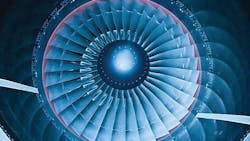How Important Are Ceramics in Aerospace Design?
Although some consumers may not realize it, modern and advanced ceramic materials have been established in multiple, viable applications in aerospace and aviation design and manufacturing. In fact, developers have obtained more than 8,000 patents related to aerospace-grade ceramics since the early 1980s. With vast resources being poured into the research, design and implementation of ceramic materials and products, this represents much more than an industry fad.
Major Players. With thousands of current patents on aerospace-grade ceramics, the competition to come up with the next big innovation is intense. General Electric currently leads the pack with nearly 1,400 individual patents; its nearest competitors, including United Technologies, Safran, Siemens and Lanxide Technology, currently hold less than 800 patents each. Rolls Royce and Boeing hold approximately 200 patents each, while Northrup Grumman and Epistar hold even less than that.
Primary Uses. Ceramics are not simply a matter of future developments; they are vital to the current aerospace industry. While they can be used in a number of ways and to achieve several design and performance objectives, there are three primary applications for aerospace-grade ceramics today:
1. Heat Resistance. Ceramics are used to achieve heat resistance. The heat-insulating properties of ceramics have been known for centuries, and the materials are used for thermal control in everything from batteries, magnets, and semiconductors to insulating tiles within aircraft. Ceramics have been adopted for multiple applications the design of space vehicles, including thermal protection from the exterior exhaust and interior protection in the form of insulation.
2. Noncorrosive Qualities. Ceramics also are used for their noncorrosive qualities. Because both aerospace and aviation design and manufacturing involves numerous corrosive and potentially hazardous materials, including jet fuel, this type of protection is absolutely critical. Despite the effectiveness of current ceramic materials, metal corrosion is still a factor on modern aircraft.
3. Light Weight. Ceramics are used in aerospace and aviation design and production simply because they are a lighter alternative to metals. Smooth and typically free of any surface imperfections, this allows for greater payloads on aircraft, faster speeds for military-grade jets, and longer deadlines for space exploration.
More Progress to Come. There's no denying the influence ceramics have had on progress in aerospace, including the space exploration, defense and commercial sectors. However, the use of ceramics has actually paved the way for the use of more advanced materials. 3-D printing, still a relatively new technology, has the potential to introduce entirely new aerospace materials, products, and systems.
Another line of development, castable beta alloys like Titanium 5553 or, as it’s sometimes known, Ti-5553, are gaining popularity within the aerospace industry, too. Ti 5553 boasts qualities similar to today's advanced ceramics, including lightweight, high durability and corrosion resistance, but it is notoriously difficult to machine or fabricate. While Ti-5553 can be cast, these difficulties may limit other applications.
Composite materials are also drawing a great deal of interest among aerospace and aviation designers and manufacturers. Once confined to applications within an aircraft's cabin, composite materials are being applied now to aircraft wings, landing gear, engines and fuselages.
It's hard to say where the aerospace, defense or commercial aviation industries would be without advanced ceramics to minimize heat transfer, protect against damage and adhere to established weight limits. Because ceramic materials have had such an impact on these industries, it's difficult to imagine aircraft or spacecraft that does not incorporate ceramic parts.
Megan Ray Nichols most recent contribution to American Machinist examined the “positive disruption” to be expected with emergence of the Industrial Internet of Things. She is an amateur astronomer and environmentalist and writes on a variety of scientific topics. Follow her on Twitter @nicholsrmegan.

